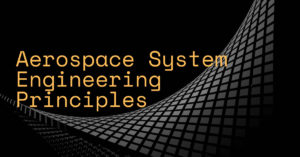
The aerospace industry is one of the most complicated and technologically advanced in the world. Engineers in this field must create safe, dependable, and efficient systems for commercial and defence uses.
Engineers use systems engineering as an essential technique to accomplish this goal. It employs a methodical approach to designing, developing, and managing complex systems such as airplanes and spacecraft.
Lots of modern Aerospace companies are using a model-based systems engineering (MBSE) approach to designing their systems and vehicles. To find out more, read the complete guide to MBSE here.
The Role of a Systems Engineer in Aerospace
A systems engineer manages the aerospace sector’s design, development, and operation of aircraft systems. Responsibilities include:
- Working with engineers to describe the system’s demands.
- Creating the system architecture.
- Ensuring the system fulfils all safety and regulatory criteria.
The systems engineer also ensures the system is correctly integrated with the aircraft’s other systems.
System Design for an Aircraft
Aviation system design is a diverse and challenging endeavour. Engineers must consider issues such as weight, performance, safety, and cost when developing aircraft systems.
The systems engineer oversees the design process, collaborating with engineers to define system requirements and build the system architecture. Engineers use computer-aided design (CAD) technology to develop detailed system models, including their components and interfaces.
A systems engineering approach to aviation systems considers the whole system’s life cycle, from concept and design to development, testing, and operation.
As a result, the system is developed and built to fulfil the demands of all stakeholders, including customers, regulatory agencies, and aircraft manufacturers.
Interface and component integration
The integration of the system and the design of its components and interfaces is an important area of aviation systems engineering. To ensure the aircraft runs effectively, the systems engineer must focus on integrating all systems, including power, control, and communication systems.
Simulation and Software
Modern aviation systems rely heavily on software and simulation. Systems engineering provides a framework for managing software development and ensuring appropriate software integration with other aircraft systems. Engineers use simulation to simulate and assess the performance of aviation systems, allowing them to identify and fix problems early on.
The Application of Valispace in Aerospace System Engineering
Valispace is an excellent tool for assisting aviation systems engineers in applying systems engineering principles.
Its unique ability to integrate real-time requirements and the system model enables engineers to work more efficiently and effectively, reducing the risk of mistakes.
The Valispace interface is simple and easy to use, allowing engineers to follow the progress and make modifications as required.
Valispace also improves traceability throughout the development process and allows teams to operate more effectively. Schedule a call to learn more about Valispace’s services and analyze their suitability for your project.

